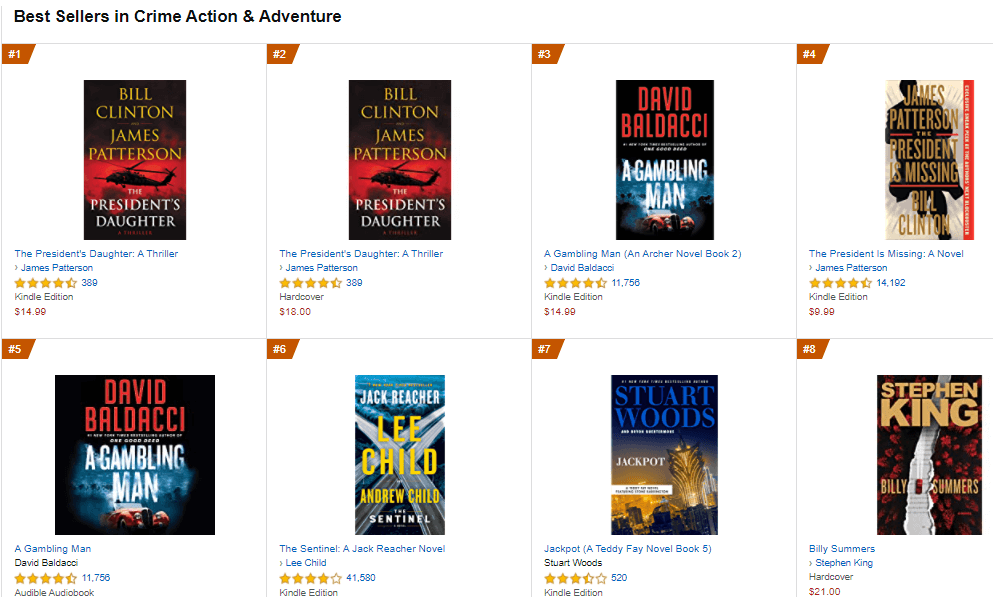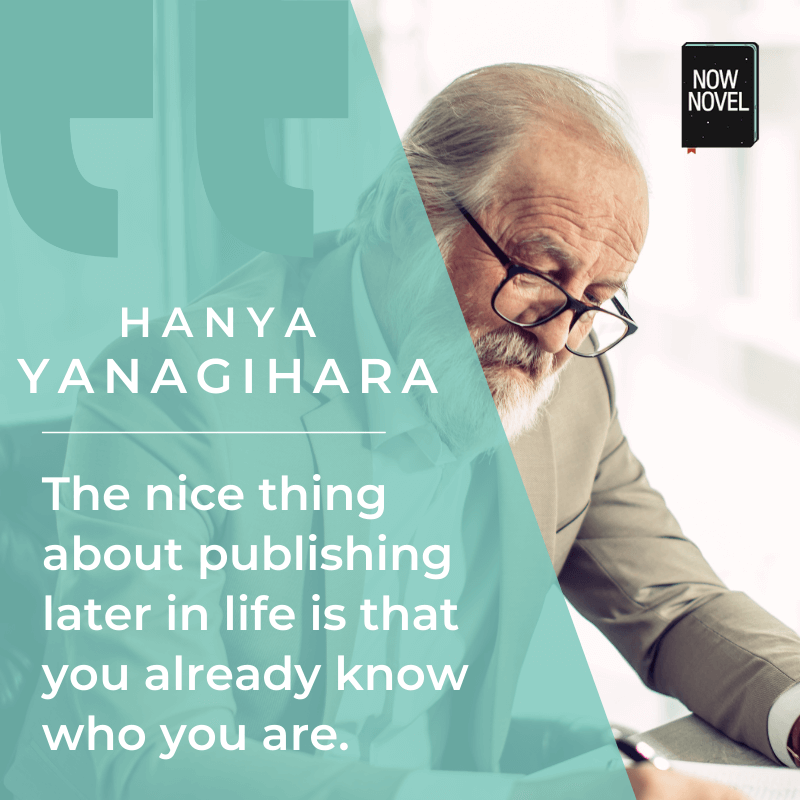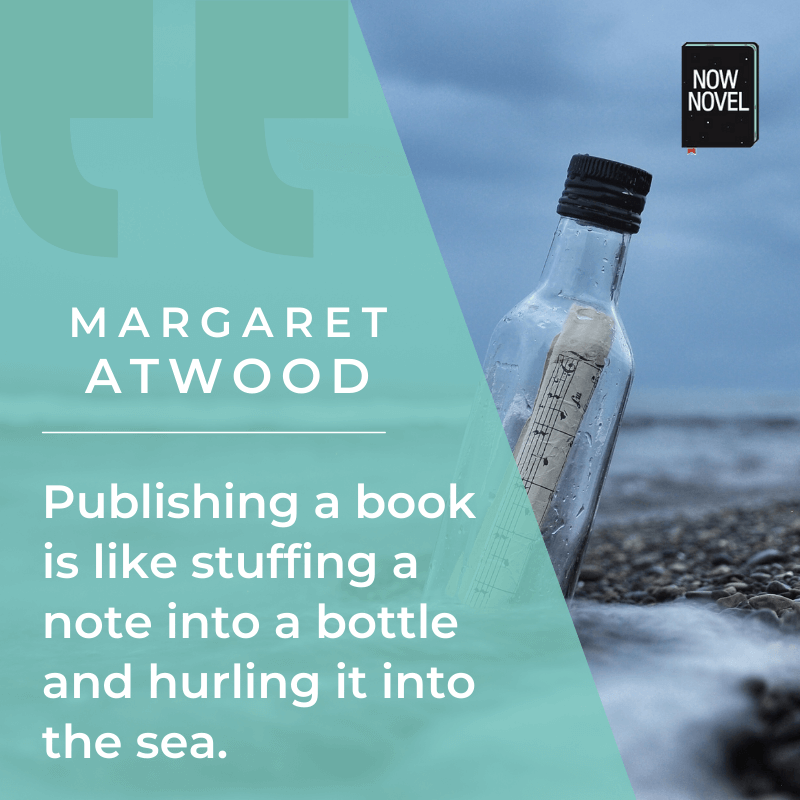Amazon, for authors, is more than just a place to sell your story (if you choose the indie route). It’s a helpful resource for research, understanding ‘market’, seeing how to categorize your books and more. Here are 6 ways to use Amazon to your benefit when starting your writing or publishing journey:
6 ways to use Amazon for authors:
- Identify what is hot in your writing genre
- Understand how to categorise your book
- Refine your synopsis and author bio
- Compare covers for insights
- Find trustworthy writing and publishing guides
- Learn how to navigate KDP (Kindle Direct Publishing)
Let’s explore these ideas further:
1. Identify what is hot in your writing genre
What sells in romance? What sells in mystery, fantasy, crime or any of the other myriad genres (and subgenres), now?
Amazon bestseller lists are helpful for understanding what’s been flying into checkout baskets and must-read lists recently. Amazon updates these lists hourly based on sales, so it’s easy to get an up-to-date idea of what is popular.
Often publishing has phases and fads. Looking at recent publishing hits may also help you to avoid what has already been done to death (sparkly vampires or executives with master/slave streaks, for example).
A simple exercise (taking ‘historical fiction’ as our sample book category):
- List the top 5 bestsellers in your genre.
- Identify key features. Are these bestsellers in your genre entries in a series, by established authors or relative newcomers? If you could sum up their subject matter in a sentence, what would they be (judging by their blurbs)?
- What true statements could you make based on what you’ve learned (e.g. ‘X subject matter features often in the top 5’)
- Scan reviews: What do readers identify positively in the author’s work?
Using bestseller lists for genre insights: Example case
At time of writing (June 2021), the top 5 bestsellers under ‘historical fiction’ (for the US Amazon store) are:
- Malibu Rising by Taylor Jenkins Reid (audible edition)
- Lady Clementine by Marie Benedict (Kindle edition)
- The Four Winds by Kristin Hannah (audible edition)
- The Four Winds by Kristi Hannah (Kindle edition)
- Outlander, book 1 by Diana Gabaldan (Kindle edition)
From this list we can surmise what is popular in historical fiction, right now, among historical fiction readers using Amazon:
- Stories set in distinctive cultural periods such as the 80s (Taylor Jenkins Reid) – consider the success of 80s revival stories and series such as Stranger Things
- ‘Untold’ stories and micro histories of the people close to famous figures (Marie Benedict’s novel focusing on the wife of Sir Winston Churchill). There have been many books, films and series in recent years focusing on the lives of women whose stories have at times been eclipsed by their male counterparts (Zelda Fitzgerald and F. Scott Fitzgerald, for example)
- Stories about periods of history fraught with struggle (Kristin Hannah’s novel set during the ‘Dust Bowl’ years of the Great Depression)
- Historical series (such as Gabaldan’s which has also been made into the popular Starz TV series)
- Audiobooks – it may be worthwhile having an actor or voice artist create an audio version of your book
The information you find using a similar process could help you shape your own story idea or story pitch around a key point of interest.
Get a professional edit
An editor’s experienced eye will help you turn rough drafts into polished prose.
LEARN MORE
2. Understand how to categorise your book
As one of the largest global retailers of books, Amazon is useful for understanding book categories and subcategories.
How should you categorise your book? What overlapping categories does it match? (e.g. ‘action and adventure’ and ‘fantasy’)?
Say, for example, we ask ‘what categories of historical fiction are there?’
Clicking ‘historical fiction’ under the genres on Amazon’s bestseller page gives us this list to explore further:
- Alternate history
- Ancient
- Biographical
- Black & African American
- Christian
- Cultural Heritage
- Fantasy
Even just looking at the full list of 16 different sub-categories, you might find new story ideas. For example, ‘what if the Norman invasion never happened?’ (alternate history) or ‘what would life have been like for the average citizen in ancient Egypt?’ (ancient history).
Understanding what subcategories your book may match will help you label your book well for maximum discoverability. You’ll understand better how to pinpoint your story’s scope and focus for readers who have the exact interests your story excites.
Reedsy offers a helpful guide to identifying categories that are good for your book, where your story would be able to compete for visibility with other listed titles.
3. Refine your synopsis and author bio
A good synopsis for a book is like an elevator pitch. You have a short time to capture a reader’s interest. So make each word count.
Reading through synopses and bios on Amazon for authors is a helpful exercise. You’ll glean many insights on how to refine your own. After all, a top-selling author is much more likely to have had professional help with these elements of PR.
Let’s look at the summary and author bio for one of the bestsellers in the ‘contemporary literature & fiction’ category for insights:
Example of an effective Amazon book summary
Title: The Unhoneymooners
Author: Christina Lauren
Summary:
For two sworn enemies, anything can happen during the Hawaiian trip of a lifetime—maybe even love—in this romantic comedy from the New York Times bestselling authors of Roomies.
Olive Torres is used to being the unlucky twin: from inexplicable mishaps to a recent layoff, her life seems to be almost comically jinxed. By contrast, her sister Ami is an eternal champion…she even managed to finance her entire wedding by winning a slew of contests. Unfortunately for Olive, the only thing worse than constant bad luck is having to spend the wedding day with the best man (and her nemesis), Ethan Thomas.
Olive braces herself for wedding hell, determined to put on a brave face, but when the entire wedding party gets food poisoning, the only people who aren’t affected are Olive and Ethan. Suddenly there’s a free honeymoon up for grabs, and Olive will be damned if Ethan gets to enjoy paradise solo.
Agreeing to a temporary truce, the pair head for Maui. After all, ten days of bliss is worth having to assume the role of loving newlyweds, right? But the weird thing is…Olive doesn’t mind playing pretend. In fact, the more she pretends to be the luckiest woman alive, the more it feels like she might be.
Why is this synopsis effective for selling the story?
- It gives a succinct, broad overview, followed by greater detail: The interested reader can gather the gist of the story from the bolded first section of the summary alone
- Core characters, tensions and themes are clear: We have a clear idea who the story is about (Olive and Ethan), core conflicts involving the main characters, and key themes (travel, weddings, love, the ‘love at first hate’ trope)
- Key arcs are suggested with room left for surprise: We see there will be movement and change in Olive and Ethan’s physical proximity and potentially their feelings for each other, but room is left for surprise and discovery
Example of a good Amazon author bio with previous credits
Reading author bios on Amazon also gives helpful insights into how to write your own ‘about’.
Here is the bio for Christina Lauren (the combined pen name of two close friends):
Christina Lauren is the combined pen name of longtime writing partners and best friends Christina Hobbs and Lauren Billings, the New York Times, USA TODAY, and #1 Internationally bestselling authors of the Beautiful and Wild Seasons series, Dating You / Hating You, Autoboyography, Love and Other Words, Roomies, Josh and Hazel’s Guide to Not Dating, My Favorite Half-Night Stand, and The Unhoneymooners. You can find them online at ChristinaLaurenBooks.com, @ChristinaLauren on Instagram, or @ChristinaLauren on Twitter.
The bio is effective because it tells potential readers a little more about the people behind the collaboration. It gives previous accolades. Previously published titles. Where to find the authors online (their website and socials). Everything the reader needs to connect further with the authors and their work.
What if you do not have awards or other acumen to list?
You could focus on a common theme or regional aspect of your stories.
Elin Hildebrand’s Amazon author bio does this, focusing on her interest in Nantucket:
Elin Hilderbrand first discovered the magic of Nantucket in July 1993. Her recipe for a happy island life includes running, writing at the beach, picnics at Eel Point with her three children, and singing “Home, Sweet Home” at the Club Car piano bar. Here’s to Us is her seventeenth novel.
This bio gives a sense of the person behind the books but also conveys a sense of the breezy, beachside locations of the author’s books.
Let’s move on to the importance of something most of us have judged a book by: Its cover.
4. Compare covers for insights
Do judge a book by its cover. Covers set expectations. In a crowded marketplace, they help to earn the first, crucial step of the on-page sale, which is drawing the reader’s eye.
Look at the current bestsellers in your genre on Amazon. Let’s take the ‘Crime’ subgenre under ‘Action & Adventure’.
What common features do you see?

Similar elements between covers include:
- Elements of tone, symbol and colour palette: Colours we associate with warnings and danger (red and yellow) predominate. Vignettes suggestive of encroaching darkness or night, too. Symbols we associate with action are common – busy highways, mysterious motor vehicles, helicopters, running figures in silhouette
- Title and author font style and placement: For crime and thrillers, you won’t see Comic Sans-like fonts and curly scripts (these are more likely to appear on humour and romance titles). Fonts tend to be bold, towering, spartan, the author’s name often as big as the title (or larger, as is the case for King or Child)
If you are intent on designing your own cover and not hiring a professional designer, have a good browse through covers. Build a Pinterest board of covers you like to inspire your own design in tone, colour palette or mood.
5. Find trustworthy writing and publishing guides
Amazon for authors is a boon for finding reliable writing guides that are well-reviewed.
As an example, for our previous article a brush-up on some details about deep POV was necessary. The sheer number of positive reviews for the guide chosen for reference suggested it was a quality resource, and they were correct.
Scour the ‘Books > Reference > Writing, Research & Publishing Guides’ section for manuals. You’ll find everything from Blake Snyder’s ‘Save the Cat!’ model for writing to more anecdotal guides such as Stephen King’s popular On Writing. (For a comprehensive guide to using the Save the Cat! model, have a read of our comprehensive guide.) If reviews are scarce, Goodreads is a great resource for weighing the pros and cons of your options.
6. Learn how to navigate KDP (Kindle Direct Publishing)
The steps above are helpful for everything from finding marketable story ideas to understanding what categories you could file your book under for maximum visibility.
When it comes to publishing your work on Amazon, this is a broad and complex subject area.
For example, do you go the ‘Kindle Select’ route and give Amazon exclusivity, or opt for ‘going wide’ (placing your book with many platforms such as Kobo, Apple Books, Barnes & Noble Press and others)? Each option comes with its pros and cons so do some digging.
Amazon is but one platform of many, so make sure you do your research, both by reading their knowledge base for publishers and other, comparative resources. Helpful resources for authors considering publishing on Amazon include:
- Reedsy’s guide to the best self-publishing companies
- Joanna Penn’s excellent blog where she tackles subjects such as publishing exclusively vs ‘going wide’
- Tucker Max’s helpful, step-by-step guide to publishing on Amazon
- Now Novels’ webinar tips, exploring some basics of self-publishing.
Subscribe to Now Novel for monthly live webinars with author Q&A’s, story outlining tools, writing feedback and more.



